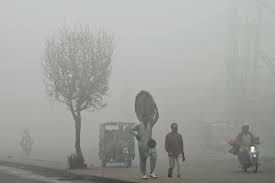In 2023, Pakistan retained its position as one of the top three countries grappling with severe smog issues, alongside Bangladesh and India.
New data released on Tuesday revealed that the concentration of particulate matter, particularly PM2.5, in these countries far exceeded the recommended levels by the World Health Organization (WHO), reaching alarming rates.
Bangladesh recorded an average PM2.5 concentration of 79.9 micrograms per cubic meter, while Pakistan’s levels stood at 73.7 micrograms. This starkly contrasts with the WHO’s guideline of no more than 5 micrograms.
Christi Chester Schroeder, the air quality science manager at IQAir, a Swiss organization specializing in air monitoring, attributed the exacerbation of pollution levels in South Asia to climatic conditions and geography. She highlighted that the region’s pollution tends to accumulate due to atmospheric conditions, compounded by factors such as agricultural practices, industrial activities, and high population density.
The situation in India also worsened, with PM2.5 levels soaring approximately 11 times above the WHO standard. New Delhi emerged as the capital city with the poorest air quality, recording 92.7 micrograms.
Meanwhile, China witnessed a 6.3% increase in PM2.5 levels, reversing a five-year trend of decline. Notably, only a handful of countries including Australia, Estonia, Finland, Grenada, Iceland, Mauritius, and New Zealand met the WHO standards in 2023.
The IQAir report, drawing data from over 30,000 monitoring stations across 134 countries and regions, highlighted the global scale of the air pollution crisis. However, it also underscored significant data gaps, with 39% of countries lacking public air quality monitoring.
Christa Hasenkopf, director of the Air Quality Life Index at the University of Chicago’s Energy Policy Institute, emphasized the urgent need for a coordinated global effort to address these data gaps, particularly in regions where the health impacts of air pollution are most severe. She pointed out the substantial benefits of such efforts in safeguarding public health at relatively low costs.


